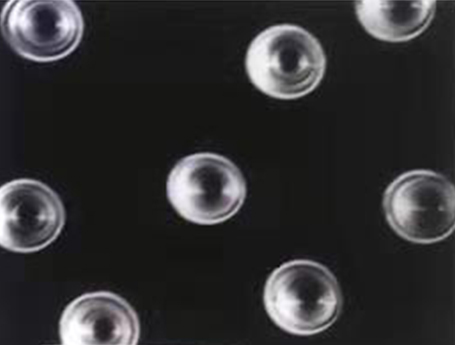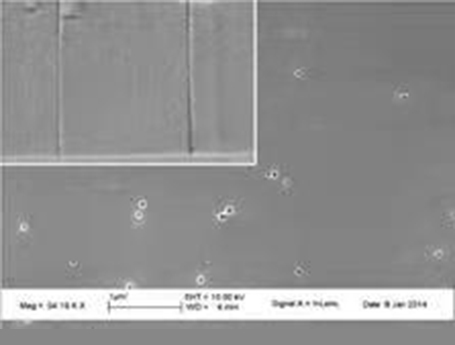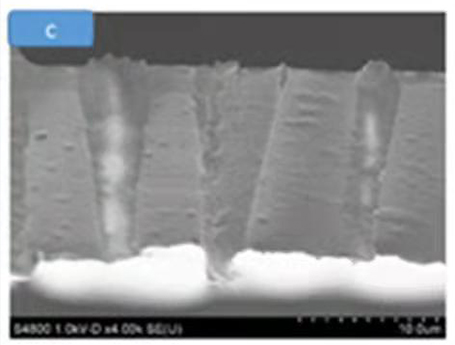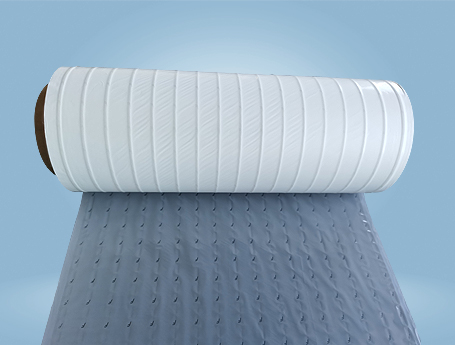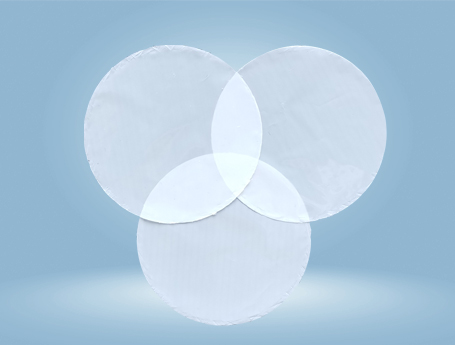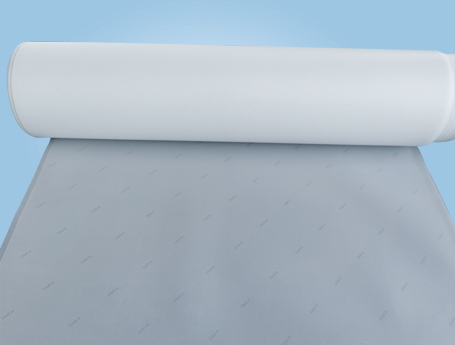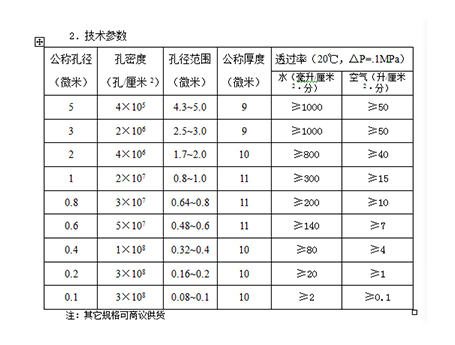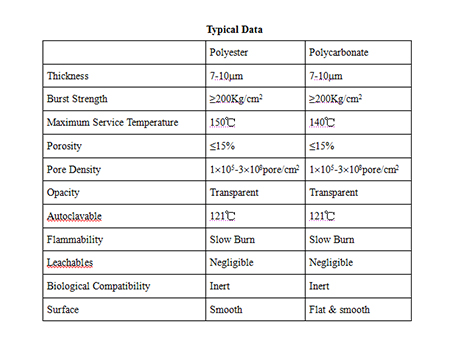Neighbor membrane, its academic name is nuclear pore membrane. Except for the nuclear pore membrane, the microporous structure of microporous membranes is a sponge like maze structure, and the filtration mechanism is basically "deep filtration". However, due to different preparation methods, the microporous structure of nuclear pore membranes is a straight hole with uniform pore size, belonging to the screening filtration mechanism. The particles intercepted on the membrane surface are easily removed by surface flushing and backwashing, so they can be reused multiple times and can withstand a pressure difference of 1MPa with good support. It can be sterilized by hot pressing at 121 ℃; Has good chemical stability and can resist corrosion from many organic solvents such as hydrocarbons, alcohols, etc; Has good resistance to microbial corrosion and can work in humid environments for a long time. It has the advantages of high mechanical strength, flexibility, flatness, thinness, transparency, and extremely small adsorption area, and is considered as an excellent precision filtration material.
Nuclear porous membranes, with their unique microporous properties, have been widely used in fields such as chemical separation, isotope separation, radiation dosimetry, biotechnology, medical research, mass spectrometry, insulation technology, purification technology, vacuum technology, environmental science, electronics industry, pharmaceutical and food industry, safety identification, and high-end manufacturing.
In the electronics industry, with the development of microelectronics technology, the requirements for the purity of reagents, water, and environmental cleanliness are becoming increasingly high. Nuclear pore membranes can be used to prepare ultrapure water, photoresist, and purify process and environmental gases, significantly improving the quality and yield of electronic products. In the pharmaceutical industry, nuclear pore membranes can be used for the removal of particles and bacteria from various injection formulations. If a large amount of particles enter the bloodstream, it can cause blockage of capillaries and inflammation of important organs such as the lungs, which is very harmful to the human body.
In the food industry, nuclear pore membranes can remove yeast, bacteria, and other residues from wine, beer, other low alcohol drinks, and various beverages. This not only improves clarity, but also implements cold disinfection, allowing for long-term storage without losing flavor, while reducing energy consumption during the production process. It can also be used to provide sterile gas to the fermentation tank to prevent bacterial infection during the fermentation process.
In the chemical industry, nuclear pore membranes can be used to prepare ultra pure reagents, recover valuable suspended solids, catalysts, etc. from solutions. In environmental engineering, nuclear porous membranes can be used for sampling of atmosphere and water, determining the content, particle size distribution, and composition of particles and microorganisms. In biotechnology, it can be used for the separation and purification of microorganisms; Separation of microorganisms, cells, and culture media; Separation of enzymes, viruses, and cellular debris. In immunology and metabolism research, membranes can block cell migration and allow metabolites, antigens, antibodies, etc. to pass freely. In ultra-low temperature engineering, the surface sprayed metal core pore film can be insulated with ultra-low temperature insulation materials to solve the contradiction between the reflection of thermal waves by the insulation screen and the vacuum degree of the system.
In medicine, it can be used to detect cancer cells in the blood and measure the deformability of red blood cells in the blood; In clinical practice, it is used to remove micro clots with a diameter of ≥ 10 μ m from human blood, as filters for artificial kidneys, artificial lungs, and large infusion terminals, as well as for blood filtration, separation of blood cells and serum.
In analysis and detection, due to its flatness, transparency, and non staining, it can directly perform microscopic examination on particles, microorganisms, and cells collected by the membrane, such as rapid determination of microorganisms in water. Utilizing the advantages of nuclear pore membrane, such as light weight, good weight consistency, high material purity, and low ash content, not only simplifies the analysis steps, but also improves the sensitivity and accuracy of weight analysis, fluorescence analysis, and activation analysis. In addition, diffusion membranes can also be used for the determination of mass transfer coefficients and diffusion coefficients.
Laser technology requires highly precise pinhole sizes to limit the size of point sources and eliminate scattering halos. The single cone shaped nuclear pore membrane can fully meet the requirements of laser technology.
In the field of optics, nuclear pore membrane technology provides new possibilities for applications such as light scattering, reflection, resonance, and absorption. The use of nuclear pore membranes to create antenna like microstructures with surface enhanced Raman scattering effects has great application prospects in the identification of biomolecules, recognition of multiple immune responses, and trace analysis of substances; Using nuclear pore membrane technology, it is easy to achieve graded matching of refractive index of optical materials. Compared to expensive multi-layer coating technology, it has the characteristics of higher optical indicators, simple production, and low cost; As a high pass filter, nuclear pore membrane can be used as a core technology device for ultra short wave antennas, infrared shielding materials, and ultra sensitive infrared detectors.
The use of track reconstruction technology to produce large-area electron field emission devices can easily achieve emission arrays with much higher surface density (≥ 108 strands/cm2) and smaller tip curvature radius (≤ 30nm) than conventional methods. Its applications in energy-saving cold cathodes, energy-saving radar tubes, high quantum yield photocathodes, and energy-saving high-resolution new displays are fascinating.
Compared with the expensive production cost and complex preparation process of silicon solar cells, which currently dominate the market, dye-sensitized solar cells (DSC) have the advantages of simple structure, simple process, low cost, and easy manufacturing; Its photovoltaic voltage is insensitive to changes in light intensity and temperature, with good light stability and no pollution to the environment. It is a very promising clean solar energy device, and once widely applied, it will help alleviate the energy crisis faced by humanity. At present, DSC batteries still have the disadvantages of low actual photoelectric conversion efficiency and poor long-term stability, which greatly limits the large-scale application of DSC batteries. Using nuclear pore membrane as a template to prepare TiO2 nanoarrays, the density, size, and shape of the array can be fully designed. By optimizing the microstructure parameters of TiO2 nanoarrays, the photoelectric conversion efficiency can be significantly improved. Doping modified or multi-layer composite semiconductor arrays can also be prepared to further enhance the photoelectric performance, thereby promoting the widespread application of DSC.
The pore size of nuclear pore membranes ranges from a few nanometers to tens of micrometers, spanning a linear range of four orders of magnitude that is invisible to the naked eye. The microscopic objects in this range include protein molecules, viruses, bacteria, white blood cells, red blood cells, cancer cells, smoke particles, microelectronic linewidth, infrared wavelength, and average free path of gas molecules, etc. These objects are closely related to modern production (such as the electronics industry), diseases (cancer, cardiovascular disease, viral hepatitis), and cutting-edge technologies (biotechnology, low-temperature technology, ultra insulation engineering). The microscopic world can only be understood and transformed using microscopic tools. The nuclear pore membrane, which has a linearity equivalent to these microscopic objects, has become an indispensable tool for directly capturing and analyzing these objects. It plays an irreplaceable role as a core technology and key material in many scientific and technological fields.
After decades of arduous exploration and efforts in the nuclear pore membrane industry, the founder of Linde Membrane Company has built a high-capacity and low-cost irradiation industrialization production line internationally, greatly reducing the production cost of nuclear pore membranes and laying the foundation for the large-scale industrial application of nuclear pore membranes in many fields; We have taken the lead in solving the industrial etching process of asymmetric nuclear pore membranes internationally and achieved large-scale production, greatly expanding the application fields of nuclear pore membranes.
